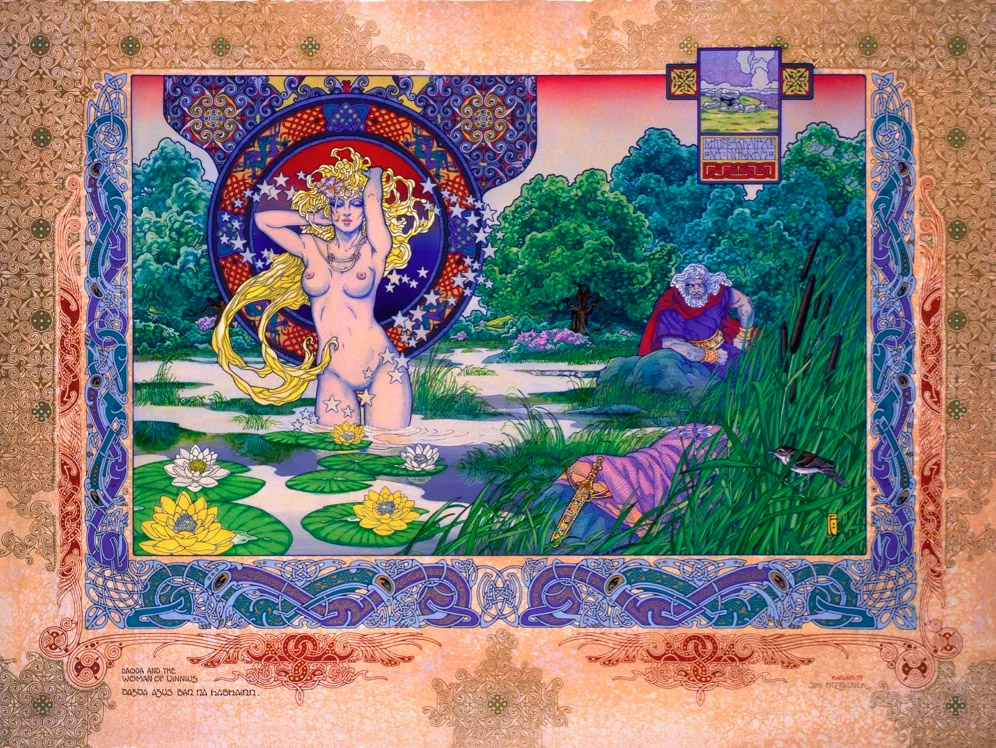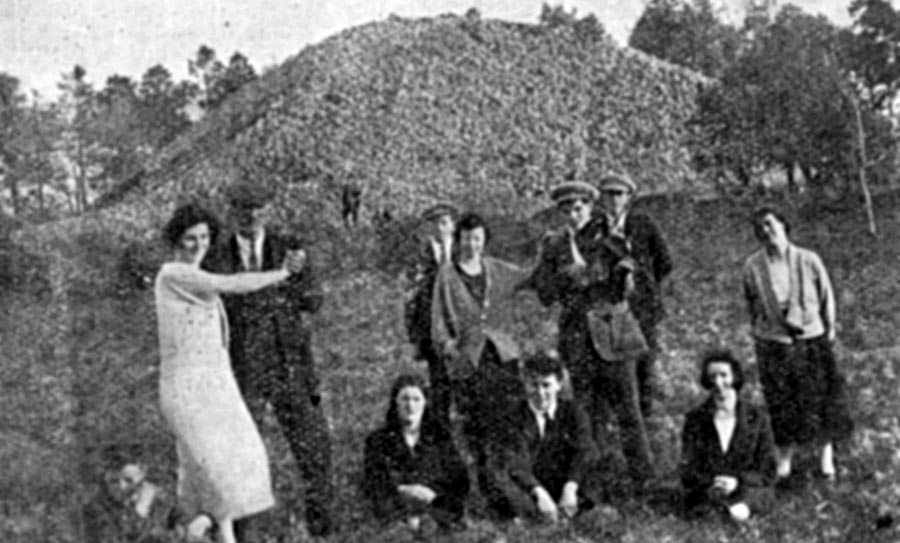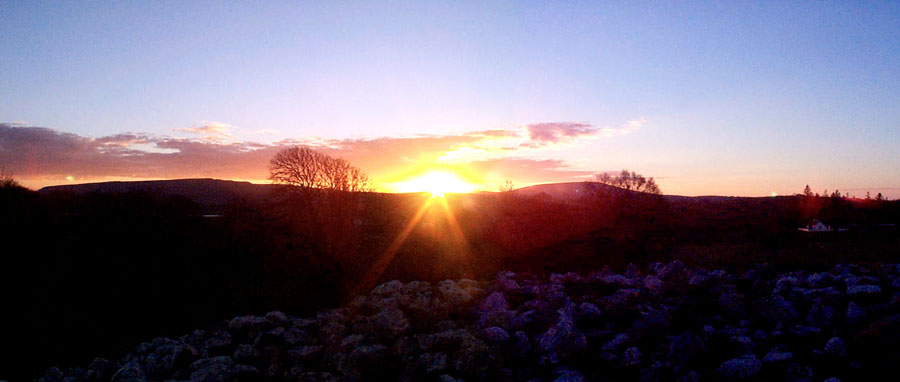Mythology at Heapstown
Heapstown Cairn is in many respects similar to Newgrange. They are built in similar locations: both are near important rivers, the Uinshin and Boyne, and both are about 70 m above sea level. Both cairns are said to have featured standing stones on their summits; the one at Heapstown is said to have had an ogham inscription.
In Irish Mythology, Heapstown is associated with a Druid of the Túatha Dé Danann named Dain Ceacht, while Newgrange is associated with his father, the Dagda. The Dagda became the owner of Newgrange after he made love to Boann, the Boyne River, and they had a son Aongus Og who was born on the same day as he was conceived - by a trick of the Dagda, the sun stood still for nine months.

Similarly, and not long before the Second Battle of Moytura, the Dagda was visiting a house he had near Lough Arrow - presumably Heapstown. Passing the river, met a beautiful woman washing her hair in the river. They lay by the water and made love, and the name of that place was called 'The Bed of the Coupling'. The woman was the Morrigan, the Wargoddess of the Túatha Dé Danann and she agreed to meet the Formorian forces on their way to the battle. She stopped them at the ford of the Uinshin and disembowelled one of their leaders as a warning.
Later in the story, the healer Dain Ceacht creates a healing site at Tober Slaine, the Well of Wholeness. They fill the well with healing herbs and chant spells over the water. This magical site was used to heal any dead or injured warriors of the Dé Dananns who was dipped in was restored to full health and would return to the Battle on the hill above. When the Formorians realized how the enemy were regenerating they had the Well filled in with stones from the river.
Now this is what was used to kindle the warriors who were wounded there so that they were more fiery the next day: Dain Cecht, his two sons Octruil and Miach, and his daughter Airmed were chanting spells over the well named Slaine. They would cast their mortally-wounded men into it as they were struck down; and they were alive when they came out. Their mortally-wounded were healed through the power of the incantation made by the four physicians who were around the well..........
Then Giobniu went into the well and he became whole. The Formorians had a warrior named Ochtriallach, the son of the Formorian king Indech mac Dé Domnann. He suggested that every single man they had should bring a stone from the stones of the River Drowes to cast into the well Slaine in Achad Abla to the west of Mag Tuiread, to the east of Lough Arrow. They went, and every man put a stone into the well. For that reason the cairn is called Ochtraillach's Cairn. But another name for that well is Loch Luibe, because Dain Ceacht put into it every herb that grew in Ireland.
The Second Battle of Moytura is the central piece of Irish mythology, where the Túatha Dé Danann fought and defeated the Formorian army on the east shore of Lough Arrow. There are two manuscript versions of the Battle from the Sixteenth Century, both of which are thought to be based on an older documents. The two quotes above, which show first the use and then destruction of the Well are based on Elizabeth Gray's translation of the text.
At a later time, Aillil, a king of Connaught, is said to have been interred in the cairn, standing upright like Queen Maeve on Knocknarea. Aillil was either the husband of Maeve, who features in the Cattle Raid of Cooley, or a brother of Niall of the Nine Hostages. He gave his name to the local area, Tireragh which means Tir Aillil, Allili's Country. Tireragh and nearby Corran were ruled by the MacDonagh clan from about the 12th century onwards. They were based in Ballindoon on the east shore of Lough Arrow, where they had a tower house and several ringforts and crannogs. The mysterious standing stone on Heapstown was probably their inauguration pillar; medieval Irish tribal elections often took place atop ancient sites with mythical associations.


